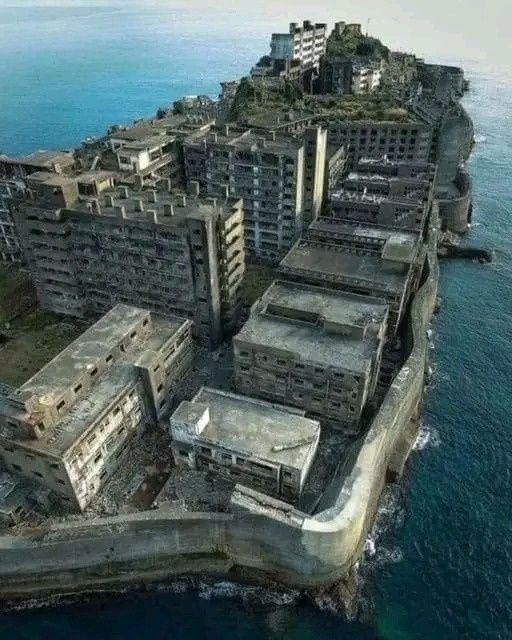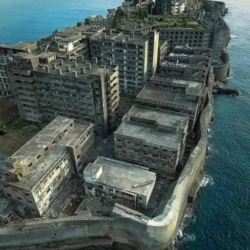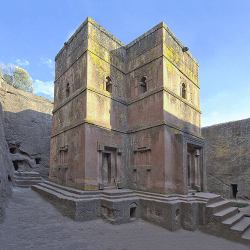Some places in the world hold a history as strange and poignant as Gunkanjima, also known as “Battleship Island” due to its fortress-like appearance. Located off the coast of Nagasaki, Japan, this tiny island, ringed by a massive seawall and packed with tightly clustered buildings, is an eerie, abandoned ghost town. For over 40 years, no one has called it home.
A City Built on Coal In the early 1900s, the Mitsubishi Corporation recognized that Gunkanjima sat atop rich submarine coal deposits. This discovery marked the beginning of the island’s rapid development. By 1941, the coal mine was producing an impressive 400,000 tonnes of coal annually, contributing significantly to Japan’s booming industrialization. Unfortunately, many of the miners toiling in these undersea mines were forced laborers, particularly from Korea, during the height of Japan’s imperial expansion.
To accommodate the workforce, Mitsubishi constructed a dense urban environment on the tiny island, which measures less than one square kilometer. High-rise apartment complexes—some of the first in Japan—were built to house the thousands of workers and their families. The structures formed a maze of courtyards, corridors, and stairways, complete with schools, restaurants, and entertainment facilities. The island earned the nickname “Midori nashi Shima,” meaning “the island without green,” due to its lack of vegetation and overwhelming concrete landscape.
At its peak in the 1950s, Gunkanjima housed nearly 6,000 people, making it the most densely populated area on Earth at the time.
However, when the coal reserves dwindled and Japan shifted to petroleum as its primary energy source, the mine was closed in 1974. Mitsubishi abandoned the island, and its residents evacuated almost overnight. Since then, nature has slowly started to reclaim the island, as plants grow in the cracks of crumbling buildings, and the once-bustling courtyards are now filled with eerie silence.
Gunkanjima remains frozen in time—a decaying reminder of Japan’s industrial past. It stands as an iconic ghost town, symbolizing the fleeting nature of human endeavors.












